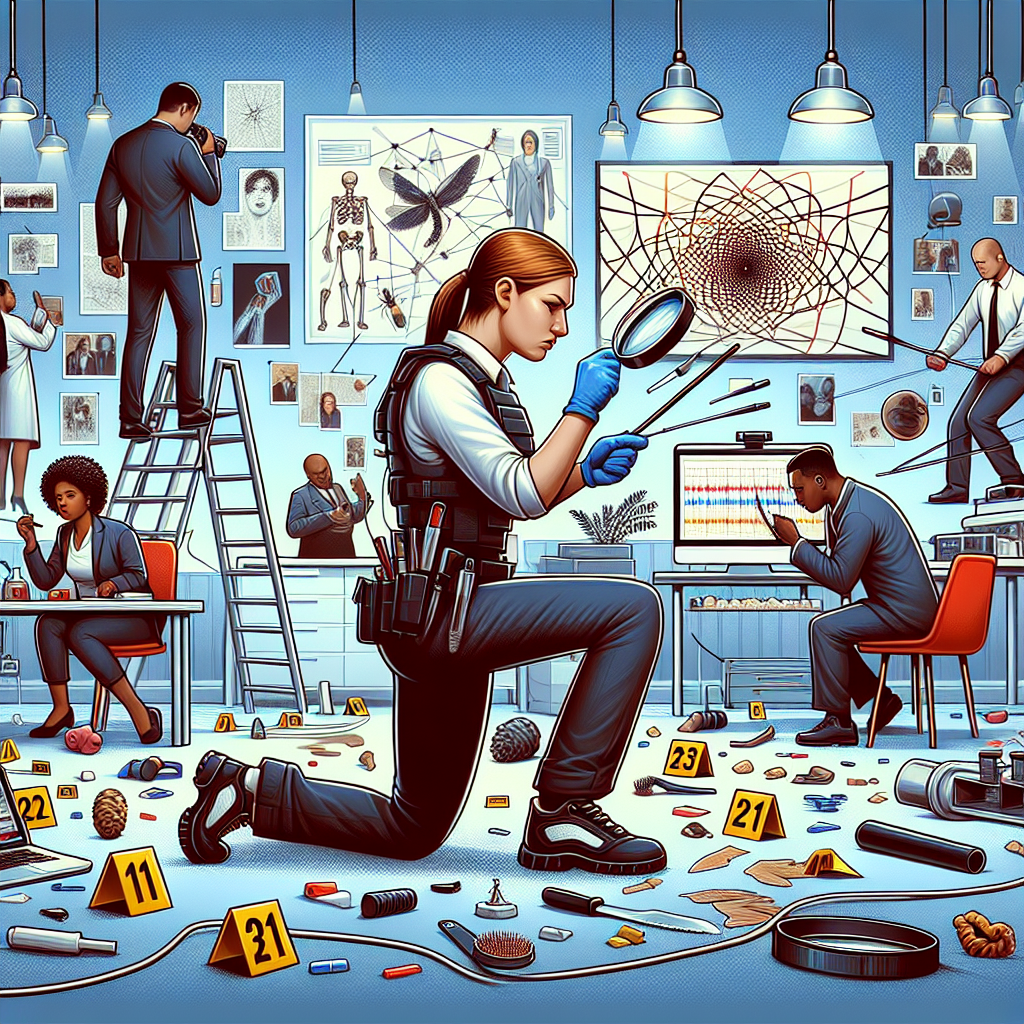
Introduction
In a world captivated by crime dramas and mystery novels, the work of crime scene analysts often remains shrouded in intrigue. These unsung heroes are at the forefront of solving some of society’s most perplexing mysteries. From the first glimmer of evidence to the ultimate resolution of a case, crime scene analysis is a meticulous journey that transforms fleeting clues into concrete closure. But what does this process really entail? In this article, "From Clue to Closure: How Crime Scene Analysts Solve Mysteries," we will dive deep into the fascinating world of forensic science, exploring how crime scene analysts piece together the puzzle of criminal investigations.
Understanding the Role of Crime Scene Analysts
Crime scene analysts, often working alongside law enforcement, play a critical role in gathering, preserving, and interpreting evidence collected from crime scenes. Their keen analytical skills and methodical approach are essential steps “from clue to closure.” But their responsibilities don’t stop there. They must also communicate their findings to law enforcement officers, attorneys, and, in some cases, juries.
Key Responsibilities
-
Evidence Collection: Whether it’s fingerprint analysis, DNA profiling, or ballistics testing, each piece of evidence collected is vital for constructing a timeline of events.
-
Preservation of Evidence: Analysts must maintain the integrity of evidence, ensuring that it remains uncontaminated from the moment it’s collected until it’s presented in a court of law.
- Analysis and Reconstruction: This is where the analyst’s skills shine. They reconstruct events based on evidence, helping to build a comprehensive narrative of the crime.
Case Study: The Golden State Killer
One of the most prominent examples of effective crime scene analysis is the case of the Golden State Killer. This serial murderer evaded capture for decades until a breakthrough in DNA analysis led investigators to apprehend Joseph James DeAngelo in 2018. Crime scene analysts played an essential role, meticulously collecting evidence from numerous crime scenes and piecing together a timeline that ultimately led to closure for countless victims and their families.
The Process of Crime Scene Analysis
The journey from clue to closure can be distinctly outlined in several phases, each characterized by its key practices and methodologies.
Phase 1: Securing the Scene
First Responders: The investigation’s success hinges on the initial actions taken at the crime scene. First responders, typically police officers, will secure the scene to prevent contamination.
Documentation: Every detail matters. Crime scene analysts will document the environment through photographs, sketches, and notes. These records are crucial “from clue to closure,” providing tangible proof of the scene as it appeared initially.
Phase 2: Evidence Collection
Types of Evidence: Evidence can be categorized into physical, testimonial, and digital.
| Type of Evidence | Examples | Importance |
|---|---|---|
| Physical | Fingerprints, hair, blood | Direct evidence linking suspects to crimes |
| Testimonial | Witness accounts | Helps to establish timelines and locations |
| Digital | Text messages, computer files | May offer a clear motive or behavioral patterns |
Chain of Custody: Maintaining a chain of custody is crucial to ensure evidence is admissible in court.
Phase 3: Analysis
Forensic Techniques: Modern crime scene analysts employ various forensic methods. Techniques such as DNA profiling, ballistics analysis, and toxicology all work in tandem to provide insights that can lead to conclusions about the perpetrator’s actions.
Case Study: The O.J. Simpson Trial
During the O.J. Simpson trial, forensic evidence—including blood samples and glove comparisons—was pivotal. Analysts meticulously analyzed blood spatter patterns, providing insights into the nature of the attacks. The fragmentation of timeline clues played a critical role in how jurors perceived the evidence “from clue to closure.”
Phase 4: Reporting
Crime scene analysts produce comprehensive reports summarizing their findings. These reports often include detailed explanations of methods used, evidentiary significance, and how these tie into the case narrative.
Communicating Findings
Effective communication is an integral part of a crime scene analyst’s role. Their findings not only inform law enforcement strategies but also aid in legal proceedings.
Importance of Communication
- Interdisciplinary Collaboration: Crime scene analysts often collaborate with detectives, lawyers, and expert witnesses, making clear communication vital for a successful outcome.
- Expert Testimony: Analysts may be called upon to testify in court, which requires them to explain complex processes and findings in understandable terms.
Case Study: The Casey Anthony Trial
In the Casey Anthony trial, forensic evidence was vital for establishing a timeline of events. The ability of forensic experts to communicate their findings clearly was instrumental in swaying public opinion and the jury’s perception of guilt.
Technological Advances in Crime Scene Analysis
Technological advancements have transformed the field of crime scene analysis. Tools such as 3D laser scanning and advanced DNA sequencing have significantly improved the efficacy and accuracy of investigations.
Emerging Technologies
-
3D Laser Scanning: This technology creates accurate, detailed models of crime scenes, allowing for virtual reconstructions.
-
Mobile Forensics: The increasing use of smartphones necessitates knowledge in retrieving data, which can provide insights into a suspect’s intentions and connections.
- DNA Phenotyping: This technique allows analysts to predict physical appearance based on DNA evidence, offering new leads even where traditional DNA matching fails.
Challenges Faced by Crime Scene Analysts
Despite the advancements and skills at their disposal, crime scene analysts face several challenges.
Resource Limitations
Many departments are underfunded and struggle to keep up with the influx of cases. This can lead to delays in evidence processing, which may hinder investigations.
Sample Contamination
The potential for contamination is ever-present. Analysts must adhere strictly to protocols to maintain evidence integrity.
Public Scrutiny
Crime scene analysts often work under the public microscope. High-profile cases can lead to scrutiny of their findings, putting additional pressure on their processes.
Conclusion
"From Clue to Closure: How Crime Scene Analysts Solve Mysteries" underlines the importance of these analysts in our society. Their work not only serves the legal system but also the hopes of families seeking closure after crime. To honor their dedication, it’s crucial to continue investing in their training, resources, and technologies.
Key Takeaway
The journey of crime scene analysis is a complex but rewarding one. Each step, from securing a scene to reporting findings, plays a critical role in delivering justice. As we continue to advance technologically and methodologically, the ability of crime scene analysts to turn clues into closure will only improve.
FAQs
1. What is the primary role of a crime scene analyst?
Crime scene analysts collect, preserve, and analyze physical evidence from crime scenes to help solve cases.
2. How has technology improved crime scene analysis?
Technology has enhanced accuracy with tools like 3D laser scanning and advanced DNA profiling methods.
3. What happens if evidence is contaminated?
If evidence is contaminated, it may be deemed inadmissible in court, potentially jeopardizing a case.
4. Can crime scene analysts be called as expert witnesses?
Yes, crime scene analysts can testify in court regarding their findings and methodologies.
5. What challenges do crime scene analysts face?
Analysts often deal with resource limitations, potential contamination of evidence, and public scrutiny in high-profile cases.
This article aims to shine a light on the vital work of crime scene analysts and the transformative journey “from clue to closure” that is so essential in bringing justice to light.


















